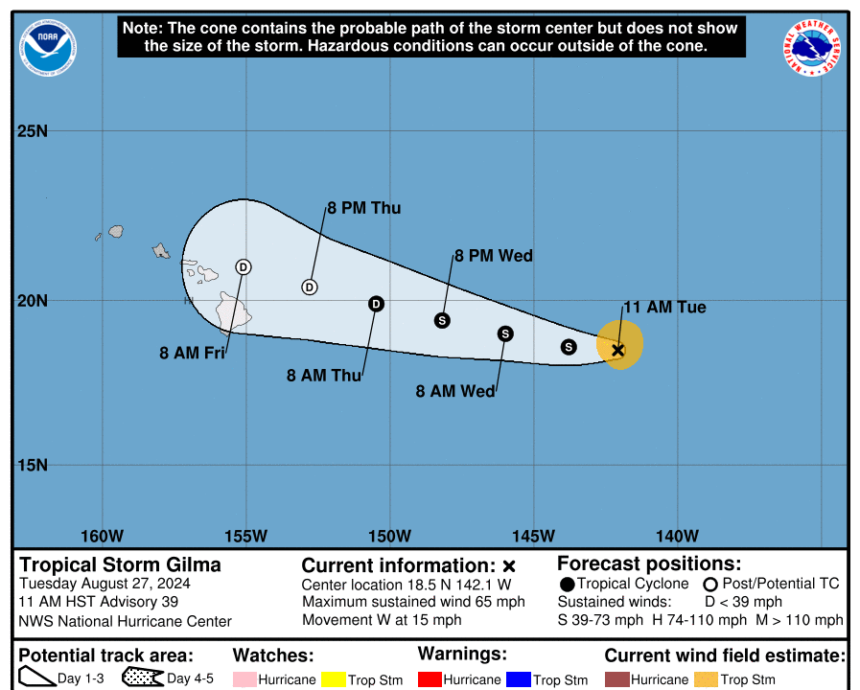There is a possibility of heavy rainfall for portions of the islands, which one local forecaster believes would be welcome.
Heading towards Hawaii, Gilma has weakened from a strong Category 2 hurricane to a tropical storm within the last 24 hours, as reported by the National Hurricane Center (NHC).
According to the NHC’s 11 a.m. forecast discussion, “Gilma is expected to continue weakening over the next 36 hours due to westerly wind shear of around 17 to 20 mph, dry air, and sea-surface temperatures of 25 to 26°C (77 to 78.8°F).” The NHC added, “In about 48 hours, Gilma is forecasted to encounter even stronger westerly wind shear, leading to the stripping away of any remaining convection.”
Positioned 850 miles east of Hilo, Hawaii, moving west at 15 mph, Tropical Storm Gilma is anticipated to become a “remnant low” by Aug. 29. A remnant low is defined by the National Weather Service as a post-tropical cyclone with winds below 39 mph and lacking the organized convection of a tropical storm.
Projected paths from the NHC indicate that Gilma will pass north of the Island of Hawaii, also known as “The Big Island,” and approach Maui around 8 a.m. local time on Aug. 30.
“The remnants of Gilma may result in heavy rainfall for parts of the Hawaiian Islands starting as early as Friday and lasting through Saturday,” stated the NHC forecast.
The anticipated rain is likely to be well-received.
“We are hoping for the rain now to kind of alleviate the drought conditions we have on the leeward side of the island,” said Ian Morrison, a forecaster at the National Weather Service’s Honolulu office, in an interview with The Epoch Times on Aug. 26.
Easterly swells generated by the approaching storm “may lead to high surf along east-facing shores of some islands” from Aug. 28 through Aug. 30.
As of now, no watches or warnings have been issued for the islands.
Gilma could be the second named storm to impact the Hawaiian Islands in as many weeks, following Hurricane Hone—now a tropical storm—that passed south of the archipelago on Aug. 25, bringing heavy rains and 70 mph winds to parts of the Big Island.







